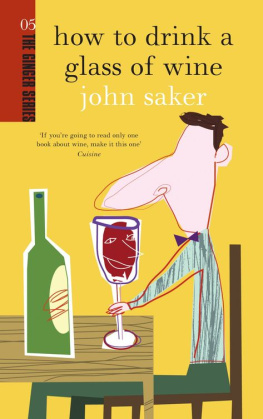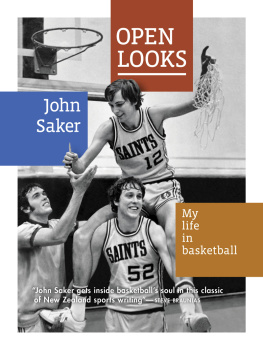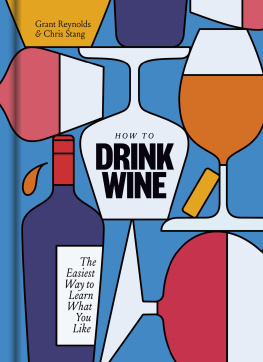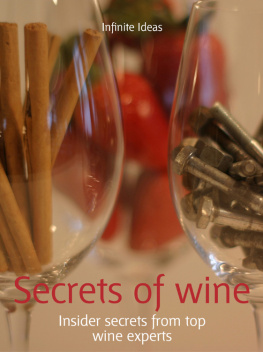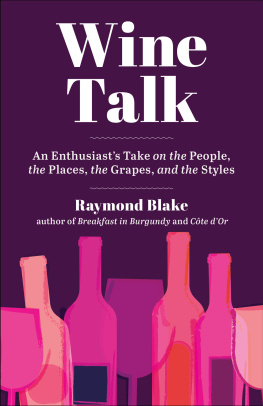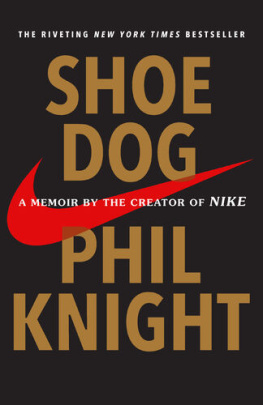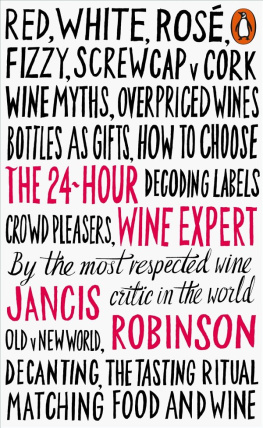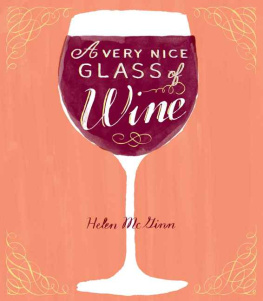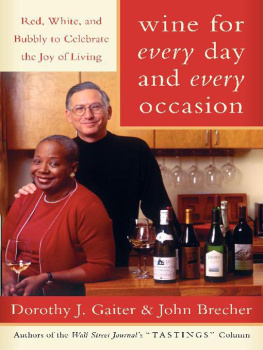John Saker - How to Drink a Glass of Wine
Here you can read online John Saker - How to Drink a Glass of Wine full text of the book (entire story) in english for free. Download pdf and epub, get meaning, cover and reviews about this ebook. City: Wellington;N.Z;New Zealand, year: 2012, publisher: Awa Press, genre: Detective and thriller. Description of the work, (preface) as well as reviews are available. Best literature library LitArk.com created for fans of good reading and offers a wide selection of genres:
Romance novel
Science fiction
Adventure
Detective
Science
History
Home and family
Prose
Art
Politics
Computer
Non-fiction
Religion
Business
Children
Humor
Choose a favorite category and find really read worthwhile books. Enjoy immersion in the world of imagination, feel the emotions of the characters or learn something new for yourself, make an fascinating discovery.
- Book:How to Drink a Glass of Wine
- Author:
- Publisher:Awa Press
- Genre:
- Year:2012
- City:Wellington;N.Z;New Zealand
- Rating:5 / 5
- Favourites:Add to favourites
- Your mark:
- 100
- 1
- 2
- 3
- 4
- 5
How to Drink a Glass of Wine: summary, description and annotation
We offer to read an annotation, description, summary or preface (depends on what the author of the book "How to Drink a Glass of Wine" wrote himself). If you haven't found the necessary information about the book — write in the comments, we will try to find it.
How to Drink a Glass of Wine — read online for free the complete book (whole text) full work
Below is the text of the book, divided by pages. System saving the place of the last page read, allows you to conveniently read the book "How to Drink a Glass of Wine" online for free, without having to search again every time where you left off. Put a bookmark, and you can go to the page where you finished reading at any time.
Font size:
Interval:
Bookmark:
For my mother, Gay Saker
The rich want good wine; the poor a lot of wine.
Goethe
EVERY TIME I looked up, Marie-Thrses backside eclipsed the view. It was always moving away from me, the pacesetter in a plodding patrol of backsides.
Bending double was the best way or, more to the point, the least painful way to attack the stout, un-trellised Provenal vines and strip them of their small dark orbs of juice. Back-breaking work was, for once, the perfect description. If I stopped and unfolded I could temporarily tranquillise my angry spine, but I would also fall behind.
Marie-Thrse and her friends travelled down the vine rows like intent pecking hens among spilled seed. Trying to close the gap if their lead became embarrassing meant really stepping on the gas, and that held the potential for pain of a different sort. My left hand still carries traces of hurried misjudged lunges with those secateurs.
We were a work gang of two hemispheres: six New Zealanders three young couples not long out of university and the rest mostly 60- and 70-something women from Flayosc, the nearby village perch that overlooked most of the vineyards in which we worked. The church bells of Flayosc dictated the shape of our working days.
Marie-Thrse was the grande dame of Flayoscais grape-pickers. Her father had perished in the human abattoir of Verdun over 50 years earlier, and she had probably worked more vintages in these fields than anybody. She was hard-working, and shockingly provincial in outlook. When we shared our enthusiasm for someone we thought was a French cultural treasure, Marie-Thrse cut the conversation short. Piaf? She was nothing but a prostitute.
Yet behind the narrowed, assessing gaze and blunt talk she seemed to like us, and made more effort than anyone else to bridge the divide between our groups Old World old and New World young. She taught me the few lines of Provenal dialect I can still muster, including Fa cao lestiu, which translates roughly as, Shes hot out here, all right.
On the stroke of noon wed stop for lunch, about a dozen of us gathering around rough tables in cool stone huts. We usually brought our own food: baguettes filled with saucisson, the French salami, or camembert cheese. Occasionally, a crop of home-grown pois chiches, or chick-peas, would appear in a huge bowl on the table. Wed help ourselves, adding chopped onion, tomato, cornichon pickled cucumber and boiled egg. After a drenching in olive oil, it was ready to eat.
And we drank. How we drank. We glugged down the red wine made the year before with fruit drawn from the same vineyards in which we worked. It was a rough-and-ready blend of the workhorse grape varieties that clothe the southern French littoral Grenache, Carignan, Cinsault, perhaps a bit of Syrah. It was light usually only about 11 percent alcohol simple, and improved by being slightly chilled. The hearty draughts we downed from Arcoroc tumblers barely touched the sides.
We drank for every possible reason: for refreshment; for taste it was a dependable companion for the simple foods we ate; and for the effect the alcohol had on us. The wine took the edge off our soreness, raised our spirits and emboldened us for the long hot afternoons that lay ahead. It gave us energy. I used to marvel at the ferocity of my post-lunch attack on the vines. At the time I was ignorant of the process that occurs in the liver whereby alcohol is transformed into a fuel source that instantly enters the bloodstream, ready to be burned up.
We drank knowing the bottle on the table was bottomless. Wine seemed less precious than the water supply. Like bread, it was an essential daily nutrient, respected but seldom discussed. It was vin, a dull monosyllable with no chateau attached. There wasnt much else to it.
I have never again drunk wine the way I did during those weeks 26 years ago.
Cut to a cellarful of noise in Wellington, some two decades later. The Beaujolais Wine Bar is packed for one of its regular, rollicking tasting evenings. A tricolor hangs against one wall, and New Zealands own peculiar blend of red, white and blue against another, illustrating the theme chosen by bar manager Andrew Parkinson: France v. New Zealand: a test match not of rugby, but of wine.
The wines are blind-tasted in a series of pairings, one-on-ones of the same grape variety and vintage. A Marlborough Sauvignon Blanc is tasted alongside a Pouilly Fum from Sancerre, a Kumeu River Chardonnay against a white Burgundy, and so on. Andrew has done his best to match wines of comparable quality.
The usual happy, vociferous group of urbanites has gathered for the occasion. These people revel in wine. They love tasting it, enjoying it and talking about it. At each tasting they learn a little more, but theyre there as much for the way wine connects them socially as for any other reason.
We taste each wine from an XL5, a small wine glass shaped like a closed tulip that was created to give the world a standard tasting glass. We jot down notes, mark each wine out of 20, and laugh as Andrew solemnly invokes rugby imagery. Getting ready for this first set piece a Marlborough mthode packing down against a big champagne house Engage!
New Zealand, weighing in many dollars lighter, takes out a close contest. Not that it matters. The result is forgotten soon after the bottles are unmasked and people fill their glasses with their personal favourite (mine a 1997 fourth growth St Estphe, a red Bordeaux) and talk the rest of the evening away.
These two vignettes from my career as a wine lover, juxtaposed like that, seem to me remarkable. They are separated by more than just half my adult life and two hemispheres: they are a revolution apart.
By 1979, the vintage I worked at Flayosc, the wine world had entered a restless period. Five years earlier the first Sauvignon Blanc vines had been planted in New Zealand, the genesis of a small but potent global force. By that time there were two wine worlds: Old and New, Europe and the rest. One was tired and inhibited by tradition; the other was innovative, flexible and hungry.
An innocent from a land of Cold Duck and Cresta Dor and, of course, beer I was ignorant of this changing tide. I felt I was immersing myself in timeless French savoir vivre. I was certainly being exposed to an ancient wine culture, but the surface reality was deceiving: I was in one of that cultures least valued and least refined corners, and an endangered one at that. French wine-drinking habits were shifting. Our cheap-litre-or-more-a-day labourers habit was already becoming pass and so, as a consequence, were the wines we were helping to produce. Customs that had seemed solid and immutable were under threat.
Most of the vineyards in which we worked had been created about a century earlier to provide inexpensive sustenance and cheer to the grim lives of Frances new industrial working class. Volume and value for money had dictated the recipe, and varieties like Carignan were good at that. The wine had been trundled north on the new railway system to be absorbed by the masses of malheureux, be they the factory fodder in Paris and the north-east, or the cannon fodder on the Western Front. It had not been uncommon for a working man to down six litres a day. During the Great War, Marie-Thrse told me, the one-litre canteens of the French soldiers were filled regularly with cheap southern red. Desperate for more, the poor sods had the idea of enlarging these thin metal containers by soaking beans in them. When swollen, the beans would stretch the canteen, making room for another hopefully mind-numbing quarter of a litre or so.
Factory closure and unemployment spread like a plague through France in the second half of the twentieth century. The demise of the thirsty labouring class put the brakes on demand for cheap plonk. A burgeoning middle class of bank clerks, boutique owners, public servants and Renault reps had no desire to drown themselves in wine of marginal quality from filthy coops. They were attracted by good bottled wine in smaller quantities. Between 1980 and 1996, annual per capita wine consumption dropped from 91 litres to 60. In the 1950s it had been close to 135.
Font size:
Interval:
Bookmark:
Similar books «How to Drink a Glass of Wine»
Look at similar books to How to Drink a Glass of Wine. We have selected literature similar in name and meaning in the hope of providing readers with more options to find new, interesting, not yet read works.
Discussion, reviews of the book How to Drink a Glass of Wine and just readers' own opinions. Leave your comments, write what you think about the work, its meaning or the main characters. Specify what exactly you liked and what you didn't like, and why you think so.

